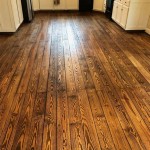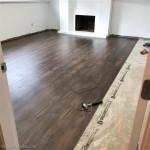How To Install Vinyl Roll Flooring On Concrete
Vinyl roll flooring is a popular choice for both residential and commercial applications because it is durable, easy to clean, and affordable. It is also relatively easy to install, even for beginners. If you are thinking about installing vinyl roll flooring on concrete, here is a step-by-step guide to help you get started.
1. Prepare the concrete
The first step is to prepare the concrete by cleaning it thoroughly. This will remove any dirt, dust, or debris that could interfere with the adhesion of the flooring. You can clean the concrete using a broom, a vacuum cleaner, or a power washer.
Once the concrete is clean, you need to make sure that it is level. If the concrete is not level, you will need to level it using a self-leveling compound.
2. Install a vapor barrier
A vapor barrier is a layer of material that is placed between the concrete and the flooring. The purpose of the vapor barrier is to prevent moisture from migrating from the concrete into the flooring. This will help to prevent the flooring from buckling or warping.
You can install a vapor barrier using either a roll of polyethylene or a liquid-applied vapor barrier. If you are using a roll of polyethylene, you will need to overlap the seams by at least 6 inches. If you are using a liquid-applied vapor barrier, you will need to follow the manufacturer's instructions.
3. Install the flooring
Once the vapor barrier is installed, you can begin installing the flooring. Start by rolling out the flooring in the corner of the room. Make sure that the flooring is aligned with the walls.
Once the flooring is rolled out, you will need to use a utility knife to trim the excess flooring around the edges of the room. You can then use a roller to press the flooring into place.
4. Seal the seams
Once the flooring is installed, you will need to seal the seams. This will help to prevent water from seeping into the flooring and causing damage.
You can seal the seams using a seam sealer. Seam sealers are available in both water-based and solvent-based formulas. Water-based seam sealers are easier to clean up, but solvent-based seam sealers are more durable.
5. Finishing touches
Once the seams are sealed, you can add finishing touches to the flooring. This could include installing baseboards, moldings, or area rugs.
Installing vinyl roll flooring on concrete is a relatively easy project that can be completed in a weekend. By following these steps, you can ensure that your flooring is installed correctly and will last for many years to come.

How To Prepare A Concrete Floor For Vinyl Flooring Parrys

How To Install Vinyl Or Laminate Floors In A Basement Over Concrete Slab

Easy Ways To Install Vinyl Plank Flooring On Concrete

10 Beginner Mistakes Installing Vinyl Plank Flooring

Easy Ways To Install Vinyl Plank Flooring On Concrete

Lvp Flooring Installation How To Install Luxury Vinyl Plank In A Basement Diy

Tips For Installing Vinyl Plank Over Concrete Floors Lemon Thistle

Concrete Subfloor Preparation For The Vinyl Floor Installation How To Diy Mryoucandoityourself

How To Lay Vinyl Sheet Flooring On Concrete

How To Install Vinyl Plank Flooring On Concrete Step By Guide
See Also







